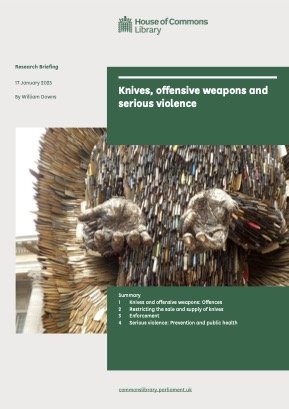By Kristin Franke Björkman and Lina Fjelkegård
Since 2021, the Swedish National Council for Crime Prevention (Brå) has been commissioned by the Government with evaluating the initiative for 10,000 more police employees. The initiative aims to increase the number of police employees by 10,000 over the period 2016-2024 (Ju2021/02238). This is the third interim report under the assignment and focuses specifically on the investigative activities. The overarching purpose of the report is to analyse staff development and investigative results in the police's work with serious crime, especially serious crimes related to organised crime, and crime against particularly vulnerable victims during the period 2018-2023. In the study, Brå uses the Police Authority's personnel statistics and case data, interviews with heads of units and investigators, as well as a survey on the current staffing situation in the police districts’ investigative sections. In the analyses of case data, we also use the Police Authority's complexity measure, which was developed with the purpose of weighting cases according to how resource-intensive (complex) they are. The higher the value of the complexity measure (Kvalue) a case has, the more resources it requires. Delimitations In terms of staff development, the study is limited to focus specifically on Serious Crimes Investigative Units (SCUs), which are on the police district and regional organisational level, and on Domestic Violence Investigative Units (DVIUs), which are on the police district level. Investigative activities at local police district level are covered to a limited extent, and activities at national level are not included in the study at all. Trends in the inflow of cases and investigation outcomes focus on three overarching categories of offences. The first two categories, serious crimes and serious crimes related to organised crime (a subset of serious crimes), were identified empirically based on the types of crime that, according to the list of offences, shall be investigated at the police district level and are usually investigated by the SCUs. These categories include for example homicide (with or without the use of firearms), extortion, violence against a public official (police officer), arson, destruction causing public endangerment by explosion (hereafter referred to as explosions) and serious weapons offence. The fact that we selected the types of crime that the SCUs normally investigate is a delimitation that Brå has had to make in order for the study to be manageable in its scope. By including explosions and homicides with firearms, which are two of the most resource-intensive types of crime in terms of investigation, we believe that the study captures a key part of the police's investigative activities in relation to serious crime and serious organised crime. The third category, crimes against particularly vulnerable victims (SUB crimes), is the collective name for the offence code groups crimes against children, crimes in close relationships and rape against adults. This study includes those SUB crimes that, according to the list of offences, shall be investigated at police district level and are usually investigated by
the DVIUs. In addition, the study covers, to a limited extent, the investigative activities at the level of local police districts and their investigation of volume crimes, which are less complex and common types of crime such as theft, assault, and minor drug offences. The main outcome used to measure investigative performance is the proportion of cases reported to prosecutors out of all closed cases involving a preliminary investigation, which we refer to as clearance rate. Some analyses also present the number of cases reported to prosecutors. More employees in the investigative activities Within the investigative activities as a whole, the number of employees has increased by 2,900 (36%) over the period 2018-2023. However, staff growth is not evenly distributed across organisational levels, but is significantly higher at police district and regional level than at local police district level. Increased inflow of cases and high number of staff on temporary loan in Serious Crimes Over the period 2018-2023, the total inflow of serious crimes has increased by almost 30 per cent, both in terms of the number of cases and their complexity (K-value). However, the number of serious crime cases handled by the specialised Serious Crimes Investigative Units (SCUs) has remained relatively unchanged over time, while the K-value has increased. This development indicates that less complex cases have been removed from the SCUs, while a larger part of their inflow consists of the most complex serious crimes. The clear discrepancy between the increase in total inflow of cases (30%) and the unchanged inflow to the SCUs also suggests that a large and increasing number of serious crimes are handled in other parts of the organisation. This is also reflected in the increasing number of serious crime cases handled by local police districts. The number of serious crimes investigated by local police districts has increased by more than 80 per cent since 2018. Police Region Stockholm is the main driver of this development. There, the number of serious crimes investigated by local police districts has increased by almost 300 per cent. The number of employees in the SCUs has increased by 250 people, just over 30 per cent, between 2018 and 2023. The increase in staff took place mainly at the beginning and end of the period studied. Police Region Stockholm stands out with a significantly lower staff growth than the other regions (7%). Police Region Mitt has also experienced relatively low growth (17%). Growth is highest in Police Region Bergslagen (75%). Despite large regional variations, the overall picture is that despite the increase in staff, the specialised SCUs have not been able to cope with the increased influx of serious crimes. The staffing survey of the investigative sections also shows that the teams have difficulty managing the influx of cases themselves. According to the survey, almost a quarter of the SCU's staffing consists of temporarily borrowed staff.
English summary of Brå report 2024:9
Stockholm: Swedish National Council on Crime Prevention, 2024. 14p.





















